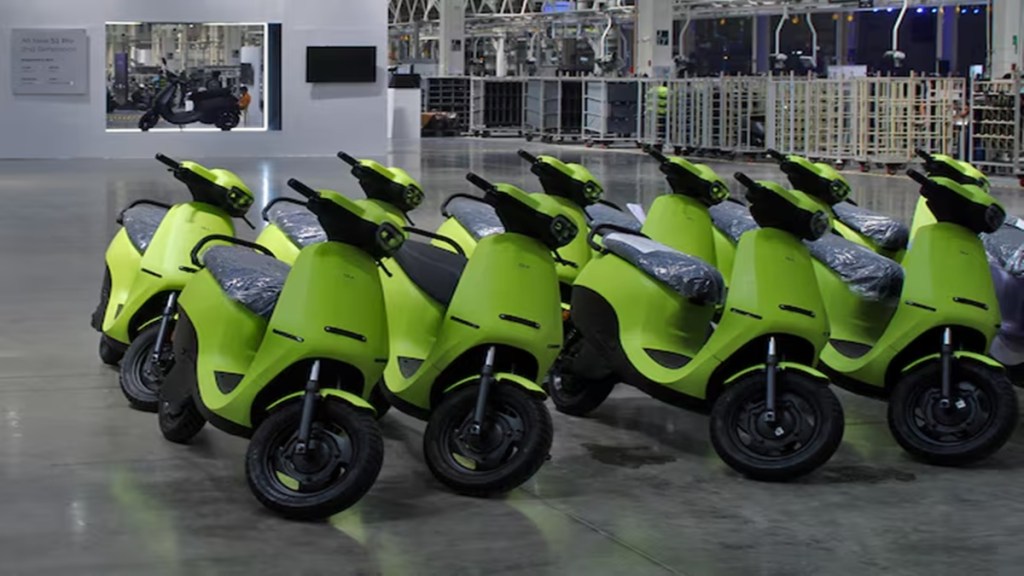Having surpassed the pre-pandemic peak in FY25, scooter sales are expected to remain the key growth engine for the two-wheeler industry this financial year. Industry experts project that scooters will continue to outpace motorcycles, which are grappling with sluggish rural demand.
The upbeat sales outlook comes on the back of the scooter segment touching a seven-year high of 6.85 million units in FY25. Prior to this, volumes had peaked at 6.7 million units in the pre-Covid FY19, when the overall two-wheeler sector recorded its highest-ever domestic sales of 21.18 million units. According to vehicle registration data from the Society of Indian Automobile Manufacturers (SIAM), scooters led industry growth in FY25, clocking a 17.36% year-on-year increase — far ahead of the 5% growth in motorcycles and the overall industry expansion of 9%.
“Scooters, buoyed by strong urban demand and the electric transition, are increasingly outpacing motorcycles in growth,” says Poonam Upadhyay, director, Crisil Ratings. She attributes the segment’s rise to evolving urban mobility needs. “Scooters offer greater convenience, ease of handling and navigation through traffic with gearless operation, making them increasingly popular among working professionals, women, and new-age commuters,” she adds. Industry players say the rapid adoption of electric models, particularly electric scooters, has added a new dimension to the segment’s momentum. Electric variants accounted for more than 6% of overall two-wheeler sales in FY25. “I used to say that with EVs coming in for the scooter industry the category share will go up. I think that is exactly what is happening,” KN Radhakrishnan, CEO and director, TVS Motor Company, said during the company’s Q4FY25 earnings call.
Electric two-wheelers (e2Ws) crossed the milestone of 1 million units in FY25, with legacy firms and new-age players such as TVS Motor, Bajaj Auto, Ola Electric, and Ather Energy battling for market share through a flurry of model launches across segments. With over 1.14 million units registered, the e2W segment posted a 21% year-on-year growth last financial year.
“Another important thing according to me is even in scooters there are different brands and different sections. This is also going to propel growth faster than the other sectors when you look at the economy motorcycles or executive motorcycles or premium motorcycles,” Radhakrishnan said. TVS Motor’s own sales mix mirrors the broader market shift. While scooters accounted for a little over a quarter of its two-wheeler sales in FY22, their share rose to 40% of the company’s 4.74 million total sales in FY25. Notably, 15% of its scooter sales came from the electric iQube model. The share of motorcycles in the company’s sales dropped to 46% in FY25, from 52% in FY22.
Still, some caution against overestimating the shift. “Motorcycles still dominate, accounting for over 60% of the total two-wheeler volumes, compared to just 35% for scooters,” says Crisil’s Upadhyay, adding that scooters are also growing from a lower base. The trend lines show a gradual shift though. According to data from the Society of Indian Automobile Manufacturers (Siam), the share of scooters in total two-wheeler sales climbed to 35% in FY25 from 30% in FY20. The share of motorcycles, in contrast, declined from 66% to 62%.
The wheel may have come full circle for India’s two-wheeler industry, as scooters — once symbolic of Indian mobility — return to the spotlight. Bajaj Auto, which brought back its iconic Chetak as an electric scooter, noted a growing trend of ICE scooter users switching to EVs at the time of replacement.
“I would say 70% of the buyers would be coming in from the scooter cohort,” said Rakesh Sharma, Executive Director, Bajaj Auto, during the last earnings call. “There could be people who are owning a motorcycle and sometimes they want a second vehicle in the house, and they are choosing. But largely, it is the EV and Chetak, particularly, they are cannibalising ICE scooters,” he noted.
“Electric scooter adoption is picking up pace due to a combination of factors,” says a senior executive at a leading two-wheeler manufacturer. “The total cost of ownership is steadily coming down, thanks to falling battery prices and lower running costs compared to petrol vehicles. At the same time, improvements in range and charging infrastructure are easing consumer concerns around range anxiety.”
Two-wheeler wholesales in April 2025 fell 16.7% to 1.46 million units from 1.75 million units a year ago. The decline was led by motorcycles, which dropped 22.7% to 8,71,666 units while scooters were down 5.7% to 5,48,370 units.
“For motorcycle volumes to recover meaningfully, a revival in rural incomes and easing of rural inflation will be critical,” Upadhyay said, noting that the segment remains highly vulnerable to rural cyclicity and cost pressures. She highlighted that the economy motorcycle segment (75cc–110cc), which once made up nearly 60% of industry volumes, has now shrunk to about 45%. “A pickup in rural demand could reverse this trend and boost overall two-wheeler volumes,” she added.
